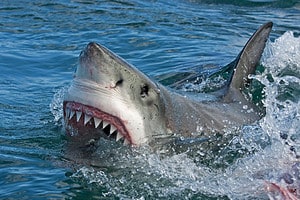Lamprey and hagfish look alike, but they couldn’t be more different!
Lampreys are ‘diadromous’; they live in marine environments but use freshwater streams and rivers to spawn. Hagfish never get this experience and spend their entire lives in the ocean.
What else should you know about these two incredible fish? Read on to learn all about the differences between a hagfish vs lamprey.
Comparing Hagfish vs Lamprey
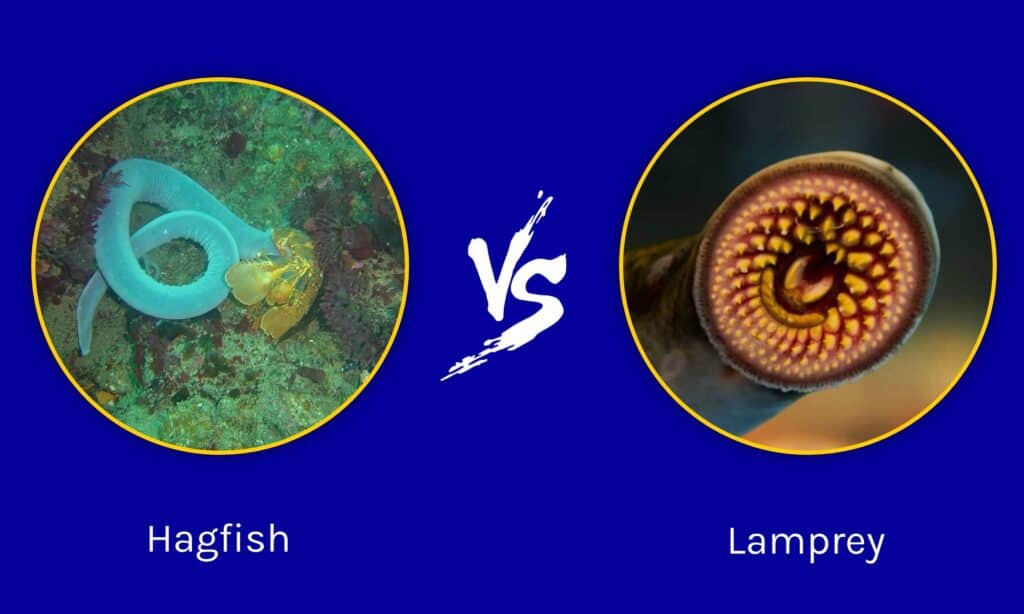
| Hagfish | Lamprey | |
|---|---|---|
| Scientific names | Myxinidae | Petronyzontidae |
| Defense mechanisms | Slime | Sharp teeth and tongue |
| Appearance | Eel like Resembles snake Jawless | Eel like Resembles snake Jawless |
| Diet | Scavengers Prefer feeding on marine carcasses As juveniles, they eat small bits of ocean debris | Fish Large marine animals like sharks |
Hagfish vs Lamprey: Key differences
The differences between a lamprey and a hagfish include their scientific name, defense mechanisms, appearance, and diet.
Hagfish are famous for having a special slime defense that clogs up the pores of gilled predators. Alternatively, lampreys are a fearsome sight in their environment, sucking their prey’s blood and bodily fluids.
Both fish have long, slender bodies that resemble eels or snakes. Both fish are also completely jawless and have super sharp teeth.
As far as diet goes, hagfish are scavengers that love feeding on the carcasses of marine animals. Lampreys hunt for their prey and attach themselves for days as they suck out the blood and bodily fluids.
Finally, hagfish have long lives, while lamprey usually dies after 8 years. Keep reading to dive deeper into the differences between these two incredible fish.
Hagfish vs Lamprey: Scientific Name
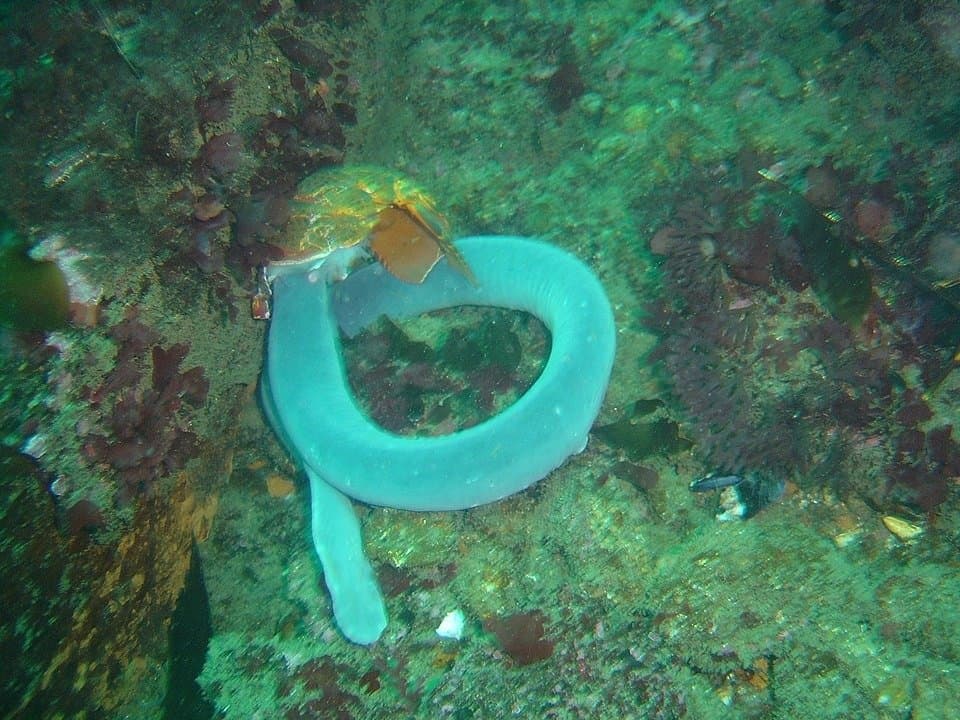
The scientific name for hagfish is
Myxini glutinosa.
©Peter Southwood / CC BY-SA 3.0 – License
There’s one family of hagfish, Myxinidae, this further is divided into several genera such as Eperatus, which includes 49 different species alone. Since they don’t have a jaw, hagfish are classified as agnathans, also known as jawless fish. This means that hagfish belong to the superclass; Cyclostomata (Agnatha).
Northern lampreys belong to the family Petronyzontidae and the order of Petromyzontiformes. The word lamprey comes from the Latin word Lampeter, meaning stone licker or stone sucking. There’s also a genus of lampreys commonly found in the United States and Canada called ‘Ichthyomyzonz.’
‘Ichthyomyzon’ is a Greek word translated to mean ‘fish to suck .’ Often, the lamprey is referred to as vampire fish. This is because of the way they feed on other animals’ blood. Other nicknames for the lamprey include bloodsucker, hitchhiker, seven-eyed cat, and lamprey eel.
Hagfish vs Lamprey: Defense Mechanisms
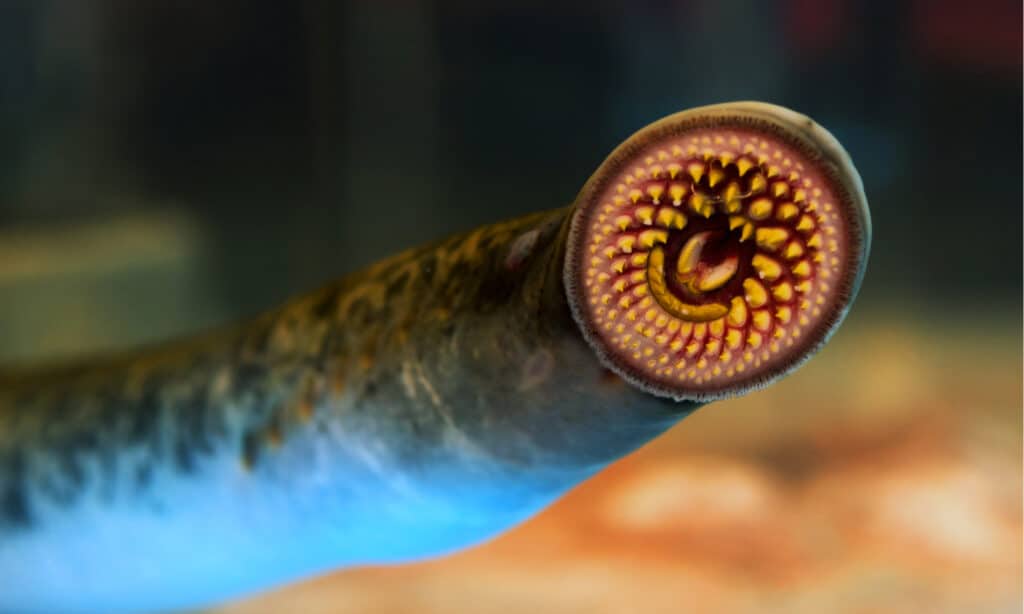
Lampreys are usually the apex predator in their environment.
©Gena Melendrez/Shutterstock.com
Hagfish have one of the most fantastic defense mechanisms, slime! Hagfishes have slime glands and 90 to 200 slime pores running down the entire body. Large amounts of slime ooze out of its pores if a hagfish is threatened.
The slime is unique and has a sticky, bonding quality. The slime can expand in contact with seawater and is incredibly efficient at defending against gilled predators. Even a hagfish can die if it gets covered in its slime. Scientists are looking for ways to use the slime threads since they’re more sustainable than spider silks.
Alternatively, lampreys are sometimes the apex predator in their environment, such as in freshwater habitats where they’re invasive. Large fish like brown trout or walleye will attack a lamprey in specific locations. However, the lamprey’s aggressive tendencies make it more likely to be a predator than prey.
When it’s time for a meal, a lamprey attaches with its suction cup mouth. They dig their sharp teeth deep into the flesh to get a tight grip. Once firmly attached, the lamprey slashes the fish’s scales and skin with its razor tongue. They also secrete an enzyme that keeps the fish’s blood from clotting, similar to how a leech feeds off its host.
Hagfish vs Lamprey: Appearance and Anatomy
Hagfish and lamprey are long with slender bodies. But that’s the only similarity in their appearance.
Hagfish have blue or purple coloring, with a bit of pinkish gray. The colors depend on the specific hagfish species. Some of the species are even covered in spots!
In addition to their unique appearance, hagfish also have unique anatomy. For one, hagfish can beat their hearts without any oxygen. They have three hearts that will beat hour after hour without any oxygen supply. Scientists believe the fats in the fish’s body power the hearts.
Hagfish are also the only animals that have a cranium but not a spinal column. Instead, they sport a cartilaginous notochord, a type of skeletal rod. Most vertebrates transition out of their notochord in utero, but not the hagfish. Their unique anatomy means that hagfish are incredibly flexible.
Lampreys only have one heart, and their heart has two chambers. They use non-muscular valves to help prevent a backflow of blood. Overall, a lamprey has a well-developed circulatory system that’s helped ensure the survival of their species. Their circulatory system is similar to amphioxi fish or lancelets.
Lampreys are known for being completely scaleless, and they most resemble an eel. You might assume that lampreys and eels are related, and that’s true to an extent. Lampreys and eels are classified as fish and the only surviving members of an ‘infraphylum’ of jawless fish known as Agnatha. However, as we’ve noted throughout this article, most of the similarities between the two are superficial.
Hagfish vs Lamprey: Diet
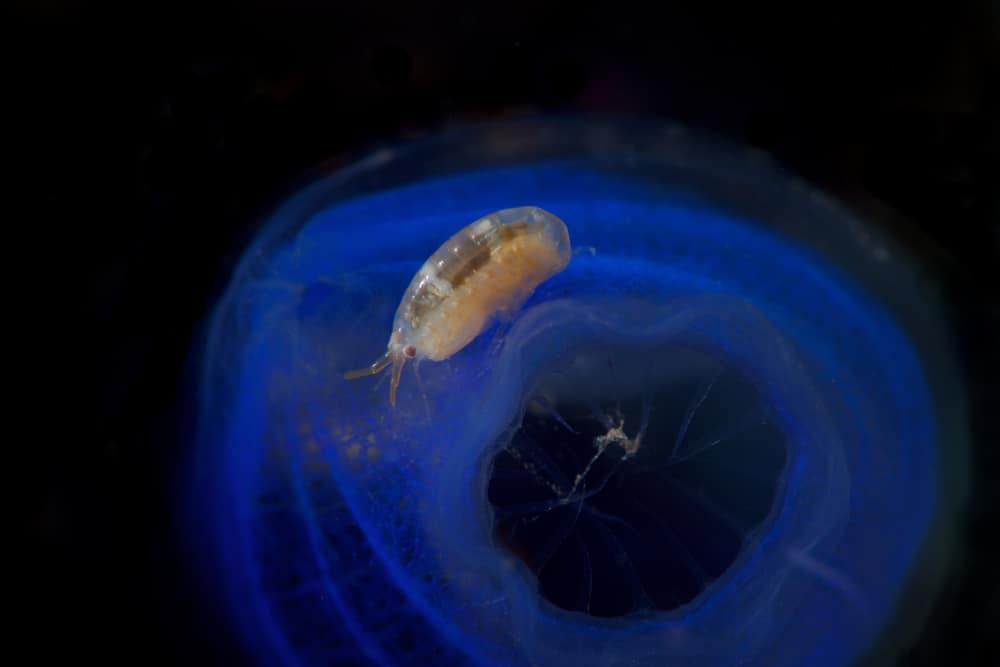
Hagfish feed on small marine animals like crustaceans.
©The Urban Tropic/Shutterstock.com
Hagfish are carnivores; they feed on small marine animals. One of the hagfish’s favorite snacks is an underwater worm resting on the sea floor mud. They also like to dine on crustaceans and carrion.
Since hagfish are parasitic scavengers, they’re known to prey on dead fish, birds, sharks, and whales. If a dead sea creature is on the ocean floor, you’ll likely see a group of hagfish taking bites. Even though they’re jawless, hagfish have two rows of keratinous structures that resemble teeth. They can burrow deep into their food and bite off chunks of the carcass.
Lampreys are carnivores, feeding on other fish’s blood and bodily fluids. The sea lamprey even feeds on large fish, such as sharks!
During the larva stage of their life, a lamprey can only feed on tiny bits of sea particles filtered through their gills. However, once they reach the adult stage, the parasitic fish are capable of attaching themselves to prey. They suck blood and bodily fluids through a hole that their tongue rasps in the fish’s flesh. The process of feeding can take days.
A lamprey will hold on to a fish until it gets its fill to feel and then detach itself. The host fish doesn’t necessarily die from the attack. However, infections that develop in the wound will likely kill it over time. The host fish usually dies if multiple lampreys are attached.
Hagfish vs Lamprey: First Appearance

Hagfish and lampreys came into existence before dinosaurs.
©Dotted Yeti/Shutterstock.com
Hagfish only live about 8 years, while lamprey can live for 40. However, even though hagfish have a shorter lifespan, they’ve had a more extended existence.
Hagfish have been around for about 500 million years. Alternatively, lampreys didn’t come about 360 million years ago. Amazingly, both fish were on the planet before the age of the dinosaurs.
The photo featured at the top of this post is ©
Thank you for reading! Have some feedback for us? Contact the AZ Animals editorial team.




